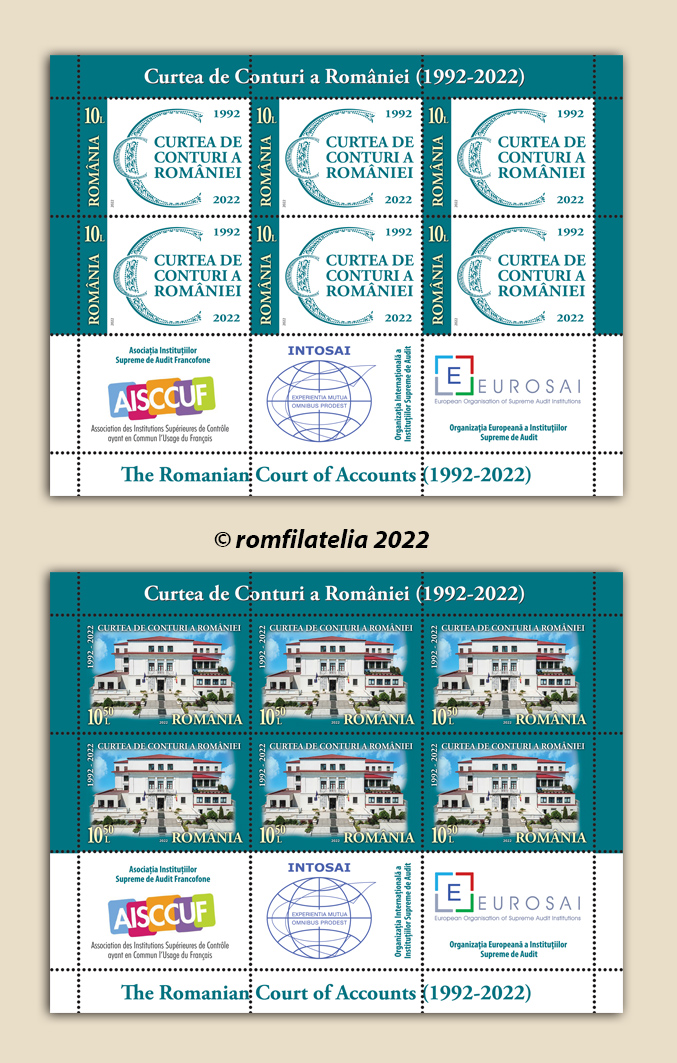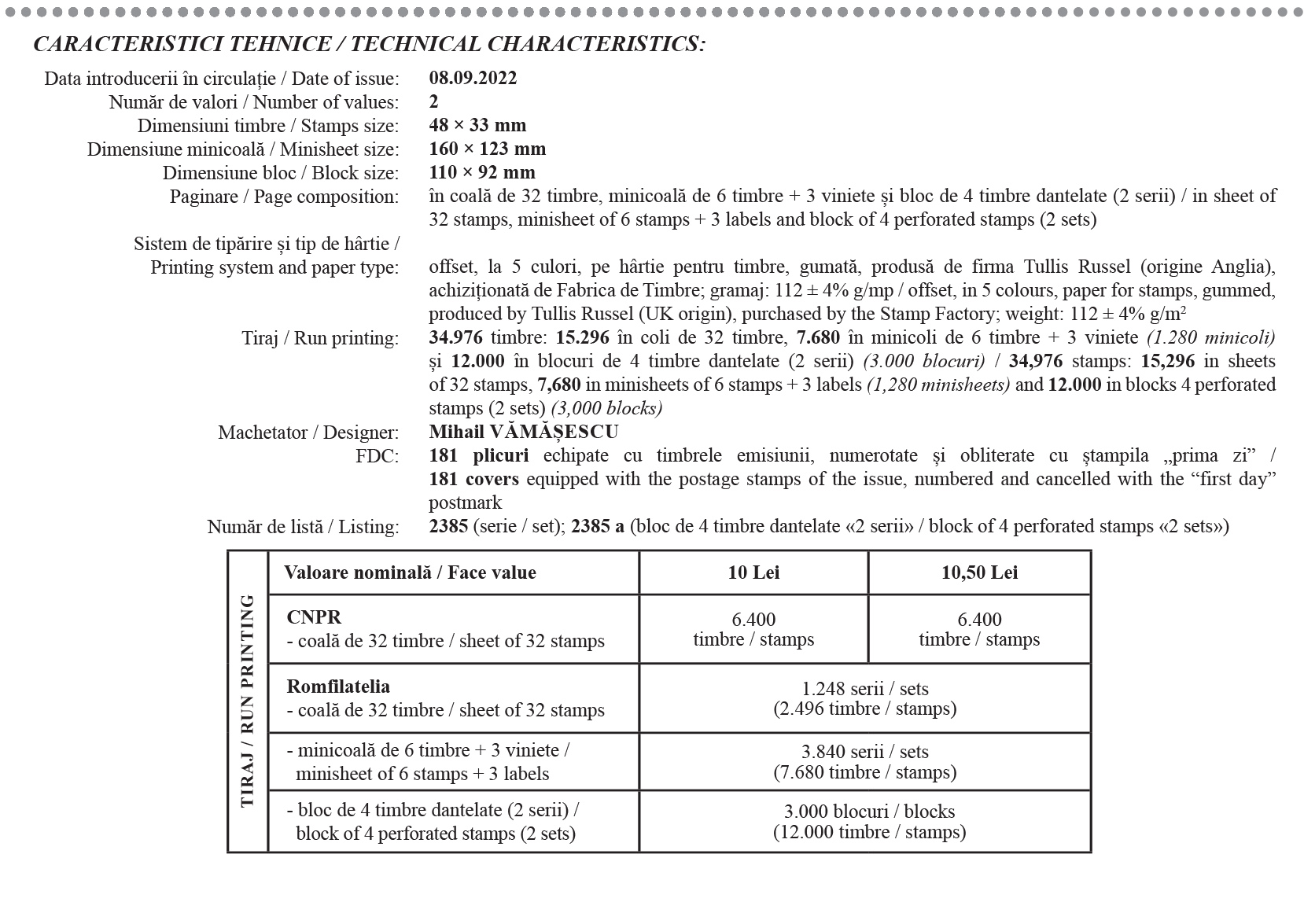 On the occasion of the thirtieth anniversary of the re-establishment of the supreme audit institution, fundamental to any solid democratic construction that aims for the good management of public money, Romfilatelia introduces into circulation on Thursday, September 8, this year, the postage stamps issue The Romanian Court of Accounts (1992 -2022).
On the occasion of the thirtieth anniversary of the re-establishment of the supreme audit institution, fundamental to any solid democratic construction that aims for the good management of public money, Romfilatelia introduces into circulation on Thursday, September 8, this year, the postage stamps issue The Romanian Court of Accounts (1992 -2022).
Within the issue, compound of two postage stamps, with the face values of Lei 10 and Lei 10,50, two minisheets, a perforated souvenir block of four stamps and a First Day Cover, are depicted identity elements, namely the institution’s official and anniversary logos and the logos presenting its membership to international organizations and the building where the institution has the headquarters.
Established in 1864 by the ruler Alexandru Ioan Cuza, the High Court of Accounts had a significant role in the development of the modern Romanian state.
An institution designed to oversee the administration of the country’s financial resources could not be absent from the emerging modern state. The role of the Court of Accounts and its place in the institutional ensemble was fixed over time by the Constitutions of 1866 and 1923 and by dedicated laws.
In the interwar period, through the Law adopted in 1929, the control and judicial powers of the Court of Accounts were strengthened, the institution receiving the same rank as the High Court of Cassation. Unfortunately, the economic crisis that followed, the dictatorial regimes and the years of war made the activity of the High Court of Accounts difficult, and in 1948, the communist power abolished this institution with a long tradition.
The Romanian Constitution of 1991 reinstated the Court of Accounts among the essential institutions of the democratic state: The Court of Accounts exercises control over the way of formation, administration and use of the financial resources of the state and the public sector. The following year, by the will of the Parliament, the Law on the organization and operation of the Court of Accounts was adopted and then promulgated by the President of Romania, on September 8th, 1992.
After its re-establishment, the Court of Accounts received multiple control and jurisdictional powers, with the intention of recovering as effectively as possible the damages found. At the same time, through the involvement of the new management, the Court of Accounts acquired international representation, becoming a member of the organizations of the supreme audit institutions INTOSAI, EUROSAI, AISCCUF, their logos being reproduced as vignettes of the minisheets of the anniversary postage stamps issue.
An important moment in the institution’s life was the establishment, in 2005, of the Audit Authority, a body operationally independent from the Court of Accounts, with the role of conducting external public audits of European funds.
Currently, the Court of Accounts is going through an extensive modernization process that involves institutional transformation by modifying the specific normative framework and defining strategic objectives that will guide its activity in the years to come. It is necessary, in the current domestic and international context, to move from the control function, specific to the Courts with jurisdiction, to the audit function, following the model of the majority of supreme audit institutions in Europe.
There have been three decades of searches and many changes at the level of Romania’s supreme audit institution. Having reached an institutional maturity after these years of turmoil, the Romanian Court of Accounts is currently at a turning point, and the measures taken aim to make the modernization process irreversible. On the way to a modern institution that influences the quality of the citizen’s life through its activity, these three decades constitute the experience on which the future can be built. Two components are needed for the success of this process: relevance in society and impact through quality and through the chosen audit themes.
Romfilatelia thanks the representatives of the Romanian Court of Accounts for the documentary support granted to the development of this postage stamps issue.



